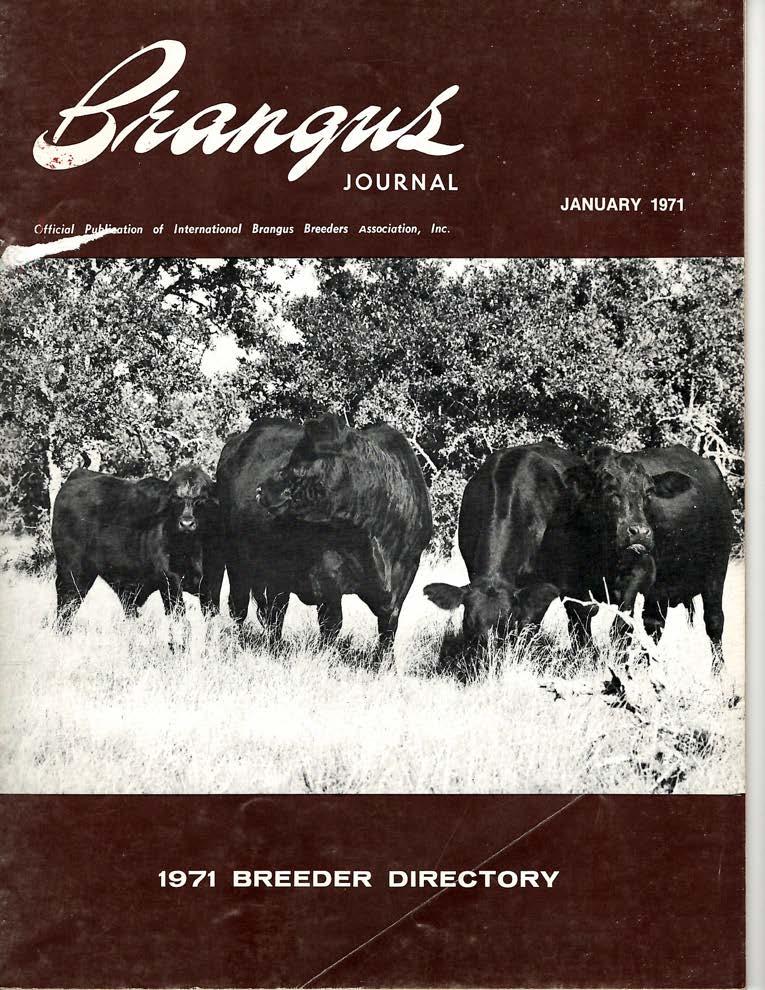EXECUTIVE CORNER
DO YOU DNA? by Darrell Wilkes, Ph.D., International Brangus Breeders Association executive vice president I never thought I would use the abbreviation of deoxyribonucleic acid (DNA) as a verb, but in a strange way it has become one. The number of members who submit DNA samples on their cattle continues to grow. We receive calls every day from members who are sampling and submitting DNA samples for the first time, which often begins with the question, “How do I DNA these cattle?” Recently, the Texas Junior Brangus Breeders Association (TJBBA) decided to require parent verification on the cattle entered in their sanctioned shows. Their motive is not to catch somebody cheating on their pedigrees but, instead, to introduce junior breeders to a technology that is here to stay in seedstock production. I applaud their decision. As these juniors become senior members and breeders of Brangus cattle, DNA testing will be as routine as branding and vaccinating. The IBBA requires parent verification on all open show entries in IBBA point shows, and parent verification is required on all AI sires and donor dams. These rules are not in place to make life more difficult. They exist to protect the integrity of the breed and increase the value of Brangus genetics. There is an inconvenient truth about pedigreed livestock, regardless of breed and regardless of specie, and that is: Pedigree errors have been occurring since the first herdbooks were established hundreds of years ago and have continued ever since. In college, I was told that 10-15% of all pedigreed animals have at least one error in their three-generation pedigree. Of course, this was somebody’s estimate because we really had no way of knowing for sure. Subsequently, when I was teaching college students about genetics, I told them the same thing. I am now convinced that the probability of at least one pedigree error in a randomly selected, three-generation pedigree is well over 50%. This is an average. I believe there are herds where the error rate is virtually zero, and herds where the error rate is closer to 100%. That sounds extreme. What I mean to say is that, of the 14 ancestors listed in a three-generation pedigree,
14
January 2021
at least one of them is incorrect and I’m even more confident that one of the 30 ancestors in a four-generation pedigree is incorrect. This opinion is based on the DNA test files that we process every day in the office. We receive files where the sire and dam match the progeny on every single animal. We receive other files where the progeny match the recorded parents less than 50% of the time. Without the benefit of DNA testing, these errors would remain, and they would obviously accumulate and perpetuate. So, if parentage errors have existed since the beginning of recorded herdbooks, but we have still made phenomenal genetic improvement of cattle, what’s the big deal? There are at least two significant downside effects to parentage errors. The first is the impact it has on genetic evaluation (calculation of EPDs). When a calf is listed with the wrong sire, for instance, and the breeder turns in birth weight, weaning weight, and yearling weight data, there are four animals whose genetic evaluation is compromised: the animal itself, the actual sire, the erroneous sire and, finally, the dam. The EPDs of the calf will be wrong, the erroneous sire will get the credit (or blame) for the calf ’s performance, the actual sire will not get credit (or blame) for the calf ’s performance, and the evaluation of the dam’s genetic contribution will obviously be compromised. The second downside of pedigree errors is the potential for unknowingly perpetuating a deleterious genetic condition into future generations. It is obvious that this has happened in virtually every population and will continue to happen. Parent verification can reduce this risk significantly. Parentage errors that allow genetic defects to “sneak” into a population can cost breeders untold losses. There are many horror stories to go around. Without naming names, there was a very popular Angus bull in the 90s that ended up being a carrier of two serious genetic defects. It was discovered after he had sired thousands of progeny, including a number of sons








